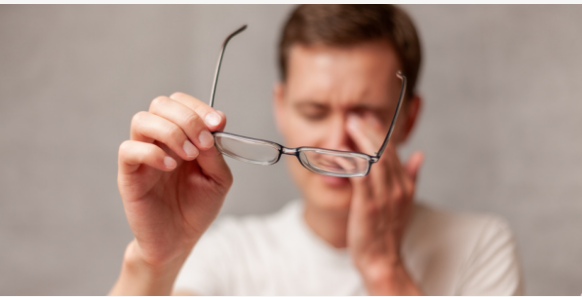Myopia Control
Myopia, or nearsightedness, is a prevalent refractive error that causes distant objects to appear blurred. In recent years, there has been a concerning increase in the incidence of myopia, particularly among children. This condition not only impacts a child’s daily functioning but also heightens the risk of developing serious, vision-threatening complications later in life.
Fortunately, early intervention can play a crucial role in managing myopia progression. Myopia Control Clinics offer specialized programs aimed at slowing or halting the advancement of myopia in children. By addressing the condition at an early stage, these programs help preserve and protect children’s long-term visual health.
What is Myopia?
Myopia, or nearsightedness, is a common refractive error that affects the eye's ability to properly focus light. In a healthy eye, light rays are bent by the cornea and lens, directing them onto the retina at the back of the eye to form a clear image, which is then transmitted to the brain for processing.
In myopia, the eyeball is typically too elongated, or the cornea has excessive curvature, disrupting the eye's focusing mechanism. This causes light rays to converge in front of the retina rather than directly on it, resulting in blurred vision for distant objects, while near objects remain clear.

The exact cause of myopia is not completely understood, but it is believed to result from a combination of genetic and environmental factors.
-
Genetics:
Research indicates a strong association between myopia and family history. Children with one or both parents who have myopia are at a higher risk of developing the condition. -
Environment:
Activities that involve prolonged close-up focus, such as reading or excessive screen time, have been linked to the development of myopia, especially in children. On the other hand, spending more time outdoors appears to have a protective effect.
Factors Influencing the Progression of Myopia
Outdoor Time vs. Screen Time
Studies show that limited outdoor activity increases the risk of myopia, while sunlight exposure offers protective benefits. Prolonged near-vision tasks, such as reading or excessive screen time, strain the eye's focusing muscles and may contribute to the elongation of the eyeball, driving myopia progression.
The impact of excessive screen time and close-up tasks on eye health
The rise in digital device use raises concerns about children's vision. Prolonged screen time can lead to digital eye strain, with symptoms like blurred vision and headaches, and may contribute to the progression of myopia by encouraging close-up vision.
Genetic Factors
Genetics play a major role in myopia risk. A child is more likely to develop myopia if one or both parents are myopic. Knowing your family history can help with early detection and intervention.
Frequently Asked Questions about Dry Eyes
What is Myopia?
Myopia, or nearsightedness, is a vision condition where light entering the eye is focused in front of the retina, causing blurry distance vision. In a healthy eye, light focuses directly on the retina for a clear image.
What are the factors contributing to myopia progression?
Limited outdoor time and excessive screen use increase myopia risk, with sunlight offering protection. Digital eye strain from screens may accelerate myopia. Genetics also play a key role, with children of myopic parents at higher risk. Early detection can be aided by knowing family history.
How can I avoid myopia?
To support healthy vision and slow myopia, encourage outdoor activities, limit screen time, use the 20-20-20 rule, and promote good posture and lighting. Regular eye exams, especially with a family history of myopia, help with early detection and intervention.
Contact Us
Address
1059 Gayley Ave Los Angeles, CA 90024
Call Us
(310) 208-1384
Email Us
4eyeswest@gmail.com
